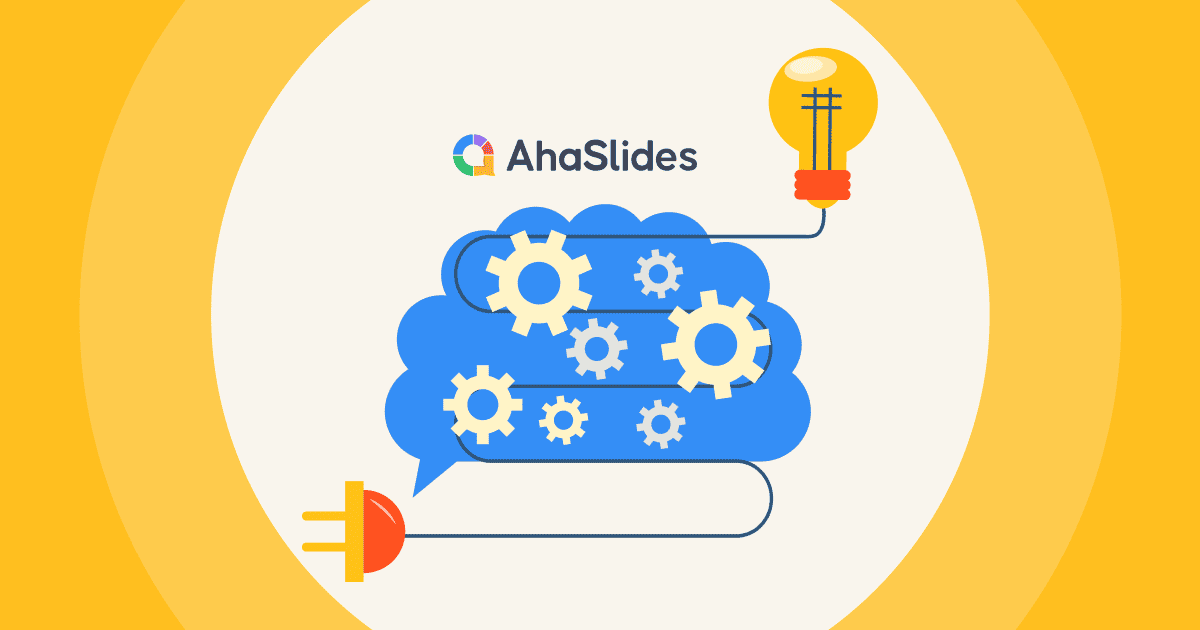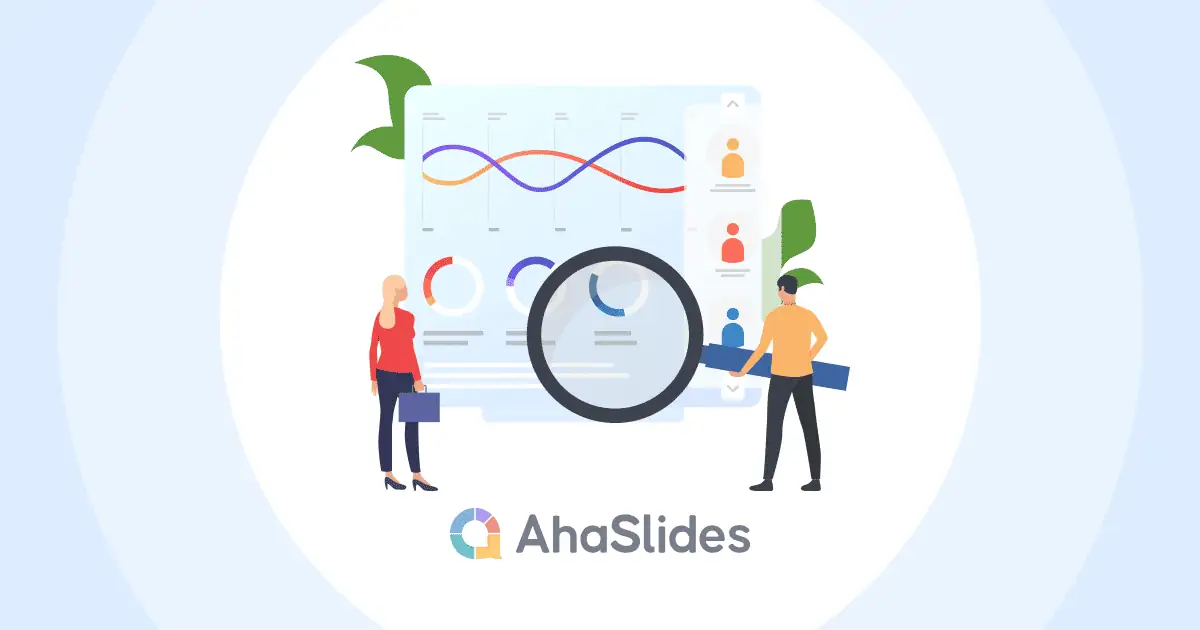Are you searching for effective ways to transform your brainstorming sessions from chaotic idea dumps into structured, productive collaboration? Whether your team works remotely, in-person, or in hybrid settings, the right brainstorming software can make all the difference between unproductive meetings and breakthrough innovations.
Traditional brainstorming methods—relying on whiteboards, sticky notes, and verbal discussions—often fall short in today's distributed work environments. Without proper tools to capture, organise, and prioritise ideas, valuable insights get lost, quieter team members stay silent, and sessions devolve into unproductive chaos.
This comprehensive guide explores 14 of the best brainstorming tools available, each designed to help teams generate, organise, and act on ideas more effectively.
Table of Contents
How We Evaluated These Brainstorming Tools
We assessed each tool against criteria that matter most to professional facilitators and team leaders:
- Meeting integration: How seamlessly the tool fits into existing workflows (PowerPoint, Zoom, Teams)
- Participant engagement: Features that encourage active participation from all attendees
- Hybrid capability: Effectiveness for in-person, remote, and hybrid team configurations
- Data capture and reporting: Ability to document ideas and generate actionable insights
- Learning curve: Time required for facilitators and participants to become proficient
- Value proposition: Pricing relative to features and professional use cases
- Scalability: Suitability for different team sizes and meeting frequencies
Our focus is specifically on tools that serve corporate training, business meetings, team workshops, and professional events—not social entertainment or casual personal use.
Interactive Presentation & Live Participation Tools
These tools combine presentation capabilities with real-time audience engagement features, making them ideal for trainers, meeting hosts, and workshop facilitators who need to maintain attention whilst collecting structured input.
1. AhaSlides

Best for: Corporate trainers, HR professionals, and meeting facilitators who need a presentation-based approach to interactive brainstorming
Key functions: Real-time audience submission and voting with auto-grouping, anonymous participation, integrated reporting
AhaSlides stands out as the only tool that combines presentation slides with comprehensive audience engagement features specifically designed for professional meetings and training sessions. Unlike pure whiteboard tools that require participants to navigate complex interfaces, AhaSlides works like a familiar presentation where attendees simply use their phones to contribute ideas, vote on concepts, and participate in structured activities.
What makes it different for meetings:
- Presentation-first approach integrates brainstorming into your existing meeting flow without switching between applications
- Presenter maintains control with moderation features and real-time analytics
- Participants need no account or app installation—just a web browser
- Anonymous submission removes hierarchical barriers in corporate settings
- Built-in assessment and quiz features enable formative assessment alongside ideation
- Detailed reporting shows individual contributions and engagement metrics for training ROI
Integration capabilities:
- PowerPoint and Google Slides compatibility (import existing decks)
- Zoom, Microsoft Teams, and Google Meet integration
- Single sign-on for enterprise accounts
Pricing: Free plan with unlimited features and 50 participants. Paid plans from $7.95/month provide advanced analytics, branding removal, and priority support. No credit card required to start, and no long-term contracts that lock you into annual commitments.
Digital Whiteboards for Visual Collaboration
Digital whiteboard tools provide infinite canvas spaces for freeform ideation, visual mapping, and collaborative sketching. They excel when brainstorming requires spatial organisation, visual elements, and flexible structures rather than linear idea lists.
2. Miro
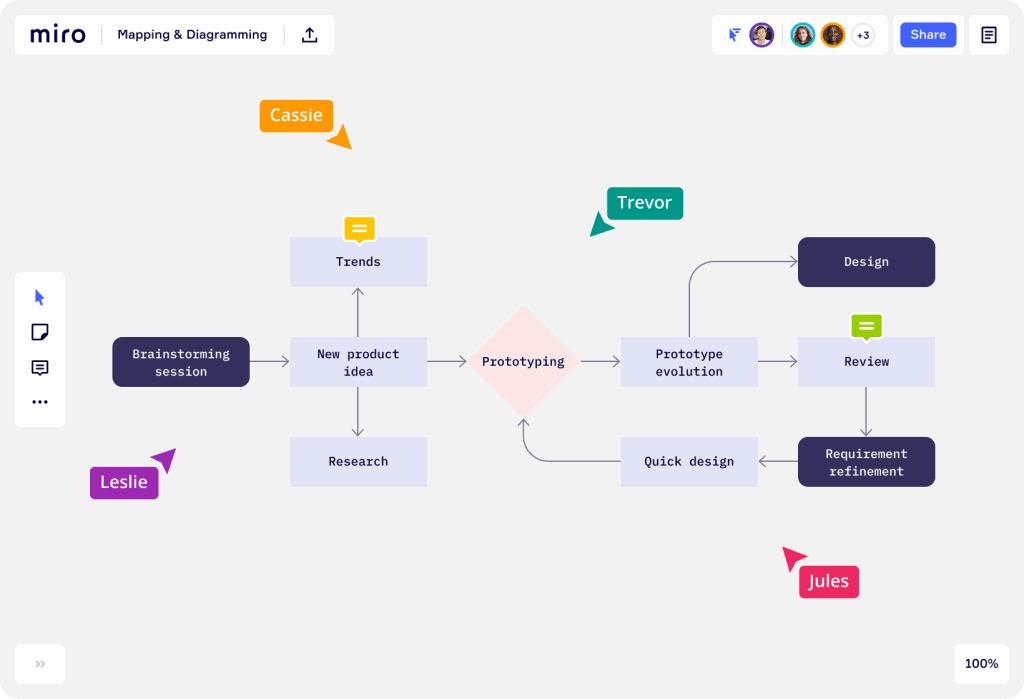
Best for: Large enterprise teams requiring comprehensive visual collaboration features and extensive template libraries
Key functions: Infinite canvas whiteboard, 2,000+ pre-built templates, real-time multi-user collaboration, integration with 100+ business tools
Miro has established itself as the enterprise standard for digital whiteboarding, offering sophisticated features that support everything from design sprints to strategic planning workshops. The platform provides an extensive template library covering frameworks like SWOT analysis, customer journey maps, and agile retrospectives—particularly valuable for teams that run structured brainstorming sessions frequently.
Learning curve: Medium—participants need brief orientation to navigate the interface effectively, but once familiar, collaboration becomes intuitive.
Integration: Connects with Slack, Microsoft Teams, Zoom, Google Workspace, Jira, Asana, and other enterprise tools.
3. Lucidspark
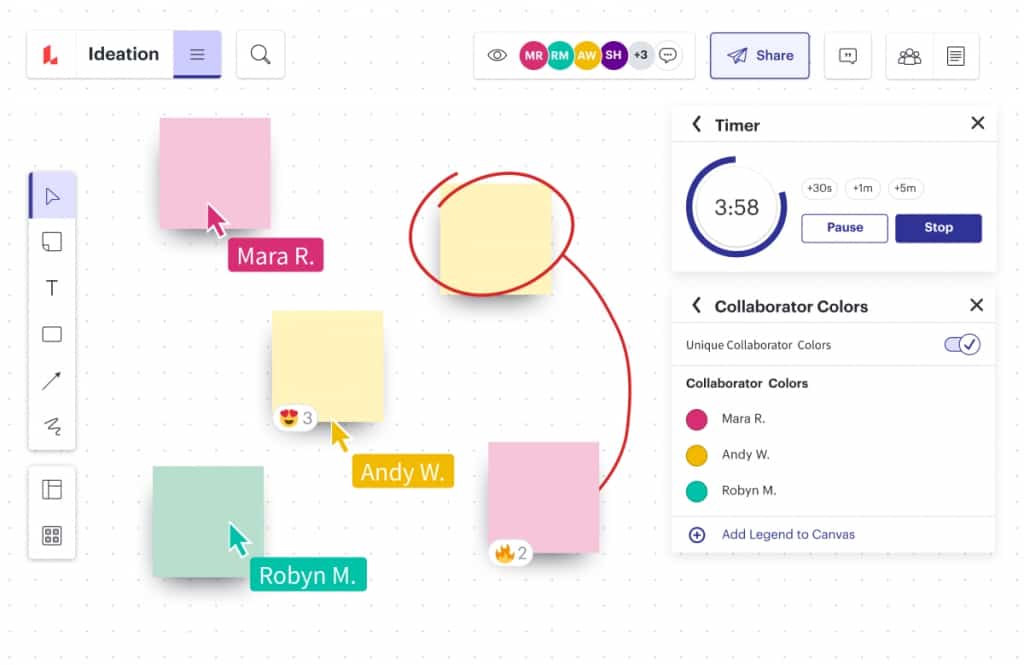
Best for: Teams wanting structured virtual brainstorming with built-in facilitation features like breakout boards and timers
Key functions: Virtual whiteboard, breakout board functionality, built-in timer, voting features, freehand annotations
Lucidspark differentiates itself through features specifically designed for facilitating structured brainstorming sessions rather than open-ended collaboration. The breakout board function allows facilitators to split large teams into smaller working groups with timers, then bring everyone back together to share insights—mirroring effective in-person workshop dynamics.
What sets it apart: The facilitation features make Lucidspark particularly effective for structured workshop formats like design sprints, agile retrospectives, and strategic planning sessions where timing and structured activities matter.
Integration: Works seamlessly with Zoom (dedicated Zoom app), Microsoft Teams, Slack, and pairs with Lucidchart for moving from ideation to formal diagramming.
4. Conceptboard
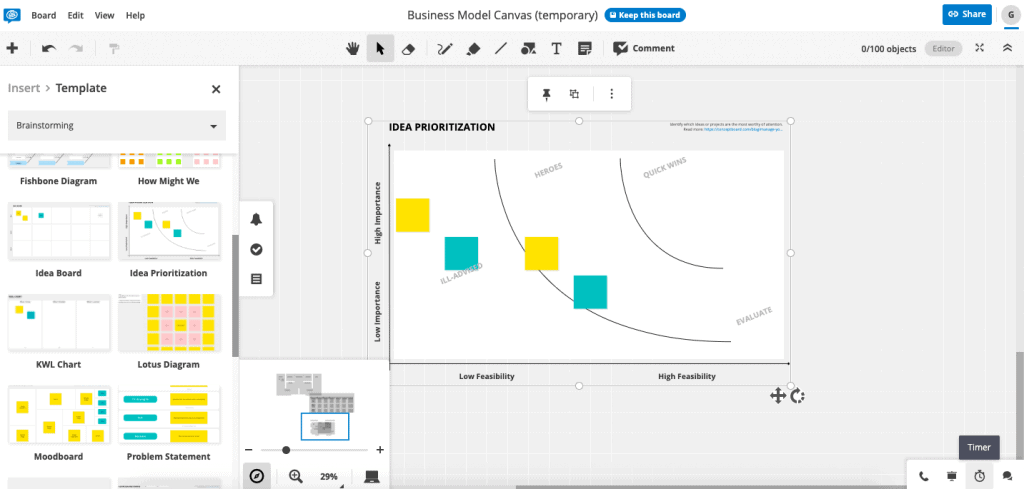
Best for: Teams prioritising aesthetic presentation and multimedia integration in their brainstorming boards
Key functions: Visual whiteboard, moderation mode, video chat integration, support for images, videos, and documents
Conceptboard emphasises visual appeal alongside functionality, making it particularly suitable for creative teams and client-facing brainstorming sessions where presentation quality matters. The moderation mode gives facilitators control over when participants can add content—useful for preventing chaos in large group sessions.
Mind Mapping for Structured Thinking
Mind mapping tools help organise ideas hierarchically, making them excellent for breaking down complex problems, exploring connections between concepts, and creating structured thought processes. They work best when brainstorming requires logical relationships and systematic exploration rather than free-flowing ideation.
5. MindMeister
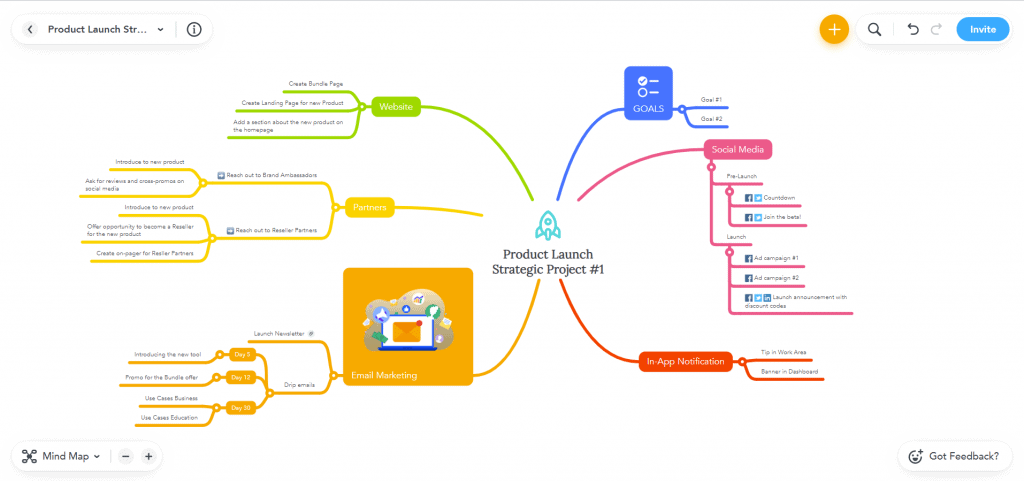
Best for: Global teams requiring real-time collaborative mind mapping with extensive customisation options
Key functions: Cloud-based mind mapping, unlimited collaborators, extensive customisation, cross-app integration with MeisterTask
MindMeister offers sophisticated mind mapping capabilities with strong collaboration features, making it suitable for distributed teams working on complex strategic thinking and planning initiatives. The connection with MeisterTask allows seamless transition from brainstorming to task management—a valuable workflow for teams that need to move quickly from ideas to execution.
Customisation: Extensive options for colours, icons, images, links, and attachments allow teams to create mind maps that align with brand guidelines and visual communication preferences.
6. Coggle
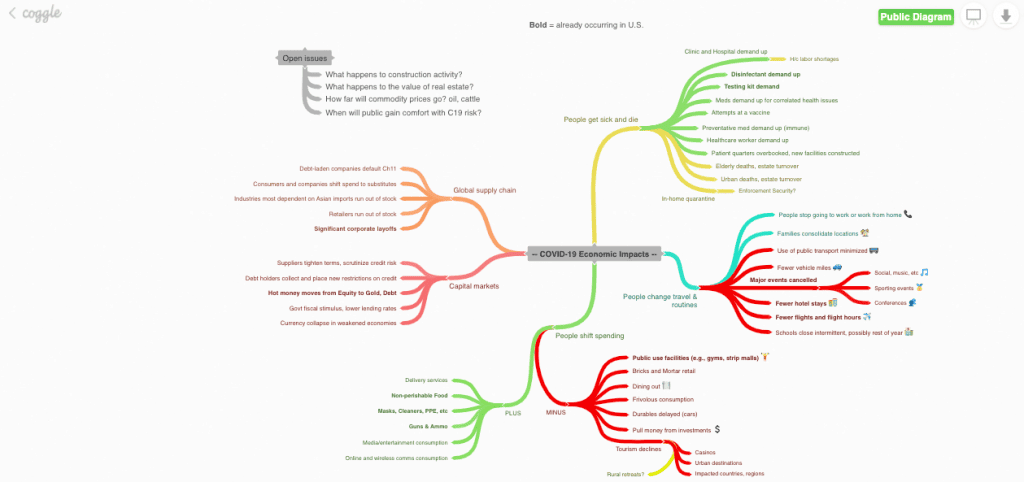
Best for: Teams wanting simple, accessible mind mapping without requiring collaborators to create accounts
Key functions: Flowcharts and mind maps, controlled line paths, unlimited collaborators without login, real-time collaboration
Coggle prioritises accessibility and ease of use, making it ideal for spontaneous brainstorming sessions where you need to quickly involve stakeholders who may not be familiar with complex tools. The no-login-required collaboration removes barriers to participation—particularly valuable when brainstorming with external partners, clients, or temporary project contributors.
Simplicity advantage: The clean interface and intuitive controls mean participants can focus on ideas rather than learning software, making Coggle particularly effective for one-off brainstorming sessions or ad hoc collaboration.
7. MindMup
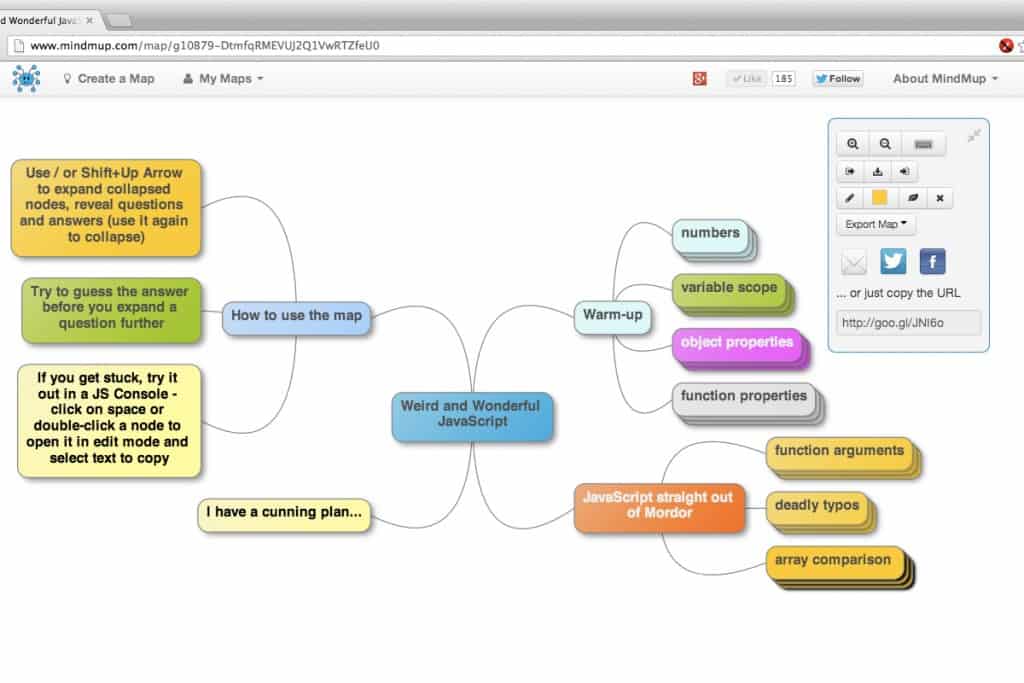
Best for: Budget-conscious teams and educators requiring straightforward mind mapping with Google Drive integration
Key functions: Basic mind mapping, keyboard shortcuts for rapid idea capture, Google Drive integration, completely free
MindMup offers no-frills mind mapping that integrates directly with Google Drive, making it particularly suitable for organisations already using Google Workspace. The keyboard shortcuts enable experienced users to capture ideas extremely quickly without breaking flow—valuable during rapid brainstorming sessions where speed matters.
Value proposition: For teams with limited budgets or simple mind mapping needs, MindMup provides essential functionality at no cost whilst maintaining professional capabilities.
8. Mindly
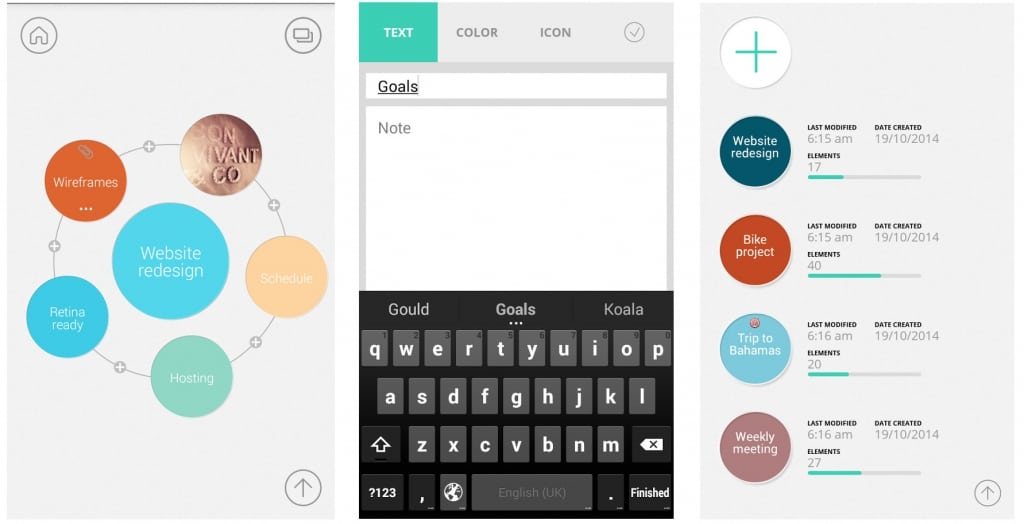
Best for: Individual brainstorming and mobile idea capture with unique radial organisation
Key functions: Radial mind mapping (planetary system layout), fluid animations, offline access, mobile-optimised
Mindly takes a distinctive approach to mind mapping with its planetary system metaphor—ideas orbit around central concepts in expandable layers. This makes it particularly effective for individual brainstorming where you're exploring multiple aspects of a central theme. The offline capability and mobile optimisation mean you can capture ideas anywhere without connectivity concerns.
Mobile-first design: Unlike tools designed primarily for desktop, Mindly works seamlessly on smartphones and tablets, making it ideal for professionals who need to capture ideas on the go.
Specialised Brainstorming Solutions
These tools serve specific brainstorming needs or workflows, offering unique capabilities that may be essential for particular professional contexts.
9. IdeaBoardz
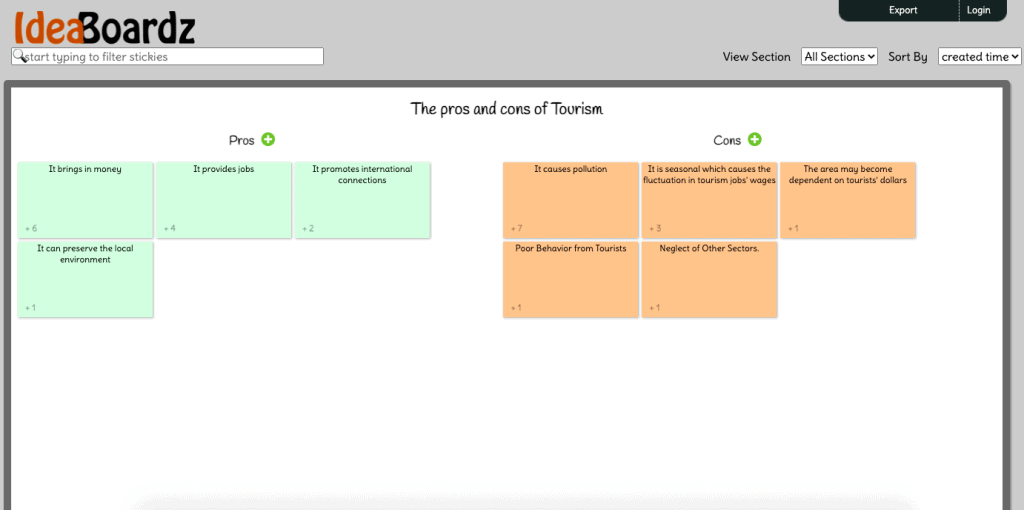
Best for: Agile teams running retrospectives and structured reflection sessions
Key functions: Virtual sticky note boards, pre-built templates (retrospectives, pros/cons, starfish), voting functionality, no setup required
IdeaBoardz specialises in the virtual sticky note experience, making it particularly effective for teams transitioning from physical post-it note brainstorming to digital formats. The pre-built retrospective templates (Start/Stop/Continue, Mad/Sad/Glad) make it immediately useful for agile teams following established frameworks.
Simplicity factor: No account creation or app installation required—facilitators simply create a board and share the link, removing friction from getting started.
10. Evernote
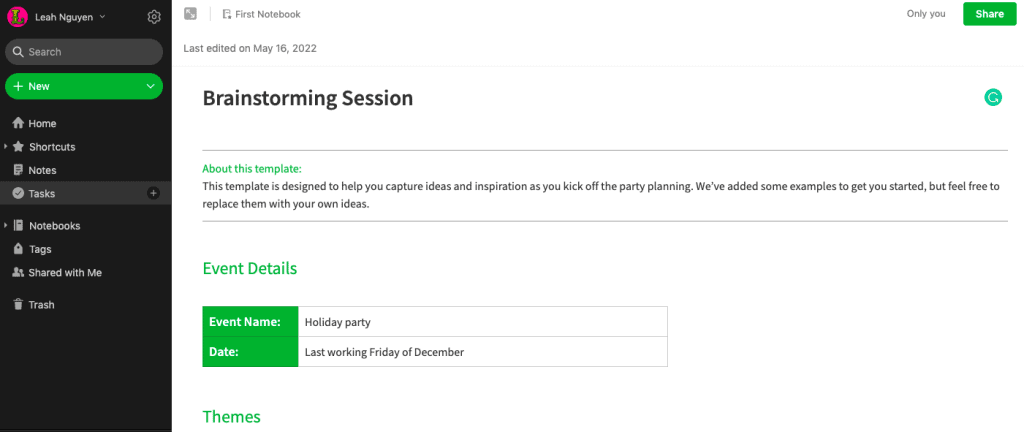
Best for: Asynchronous idea capture and individual brainstorming across multiple devices
Key functions: Cross-device note syncing, character recognition (handwriting to text), organisation with notebooks and tags, template library
Evernote serves a different brainstorming need—capturing individual ideas whenever inspiration strikes, then organising them for later team sessions. The character recognition feature is particularly valuable for professionals who prefer sketching or handwriting initial concepts but need digital organisation.
Asynchronous workflow: Unlike real-time collaboration tools, Evernote excels at individual capture and preparation, making it a valuable complement to team brainstorming sessions rather than a replacement.
11. LucidChart

Best for: Process-oriented brainstorming requiring flowcharts, org charts, and technical diagrams
Key functions: Professional diagramming, extensive shape libraries, real-time collaboration, integrations with business tools
LucidChart (the more formal cousin of Lucidspark) serves teams that need to brainstorm processes, workflows, and systems rather than just capture ideas. The extensive shape libraries and professional formatting options make it suitable for creating presentation-ready outputs during brainstorming sessions.
Technical capability: Unlike general whiteboards, LucidChart supports sophisticated diagram types including network diagrams, UML, entity-relationship diagrams, and AWS architecture diagrams—valuable for technical teams brainstorming system designs.
12. MindNode
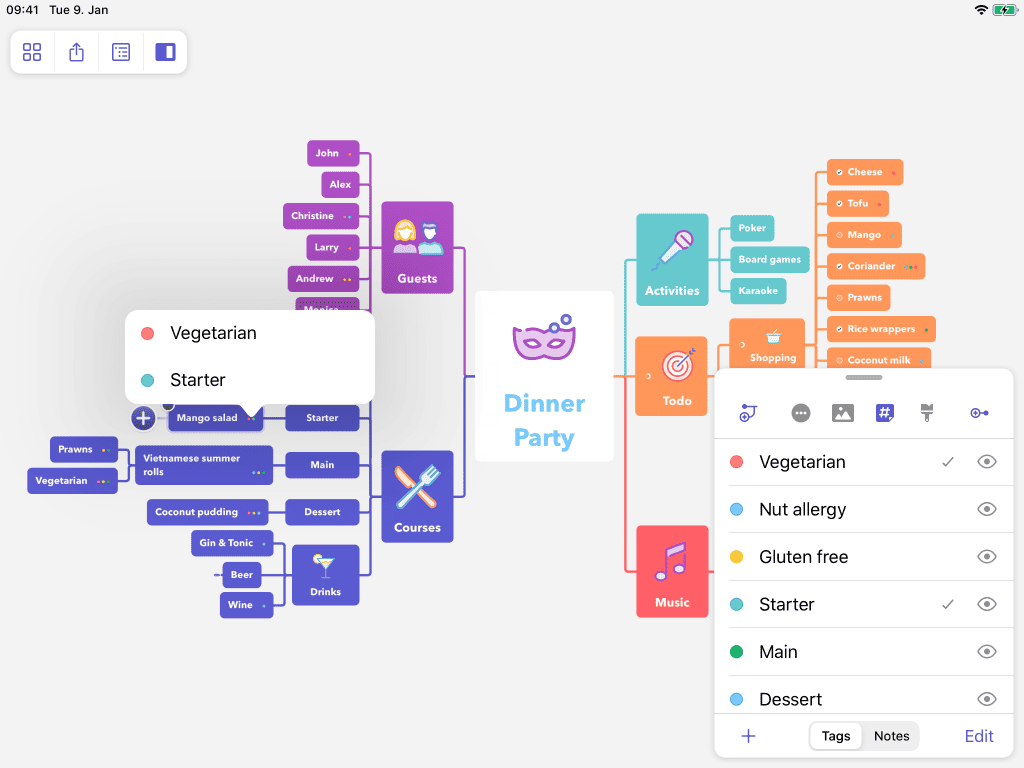
Best for: Apple ecosystem users wanting beautiful, intuitive mind mapping on Mac, iPad, and iPhone
Key functions: Native Apple design, iPhone widget for quick capture, task integration with Reminders, visual themes, focus mode
MindNode provides the most polished user experience for Apple users, with design that feels native to iOS and macOS. The iPhone widget means you can start a mind map with a single tap from your home screen—valuable for capturing fleeting ideas before they disappear.
Apple-only limitation: The exclusive focus on Apple platforms means it's only suitable for organisations standardised on Apple devices, but for those teams, the seamless ecosystem integration provides significant value.
13. WiseMapping
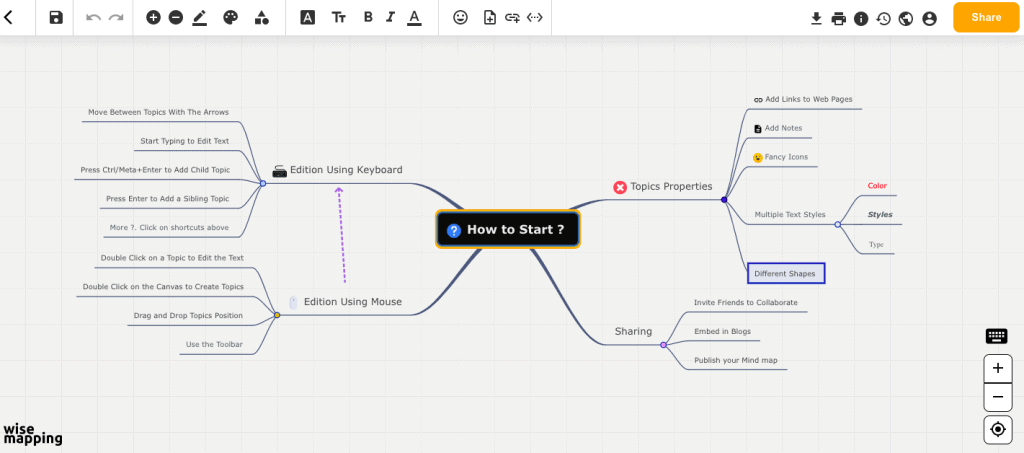
Best for: Organisations requiring open-source solutions or custom deployments
Key functions: Free open-source mind mapping, embeddable in websites, team collaboration, export options
WiseMapping stands out as a completely free, open-source option that can be self-hosted or embedded in custom applications. This makes it particularly valuable for organisations with specific security requirements, custom integration needs, or those who simply want to avoid vendor lock-in.
Open-source advantage: Technical teams can modify WiseMapping to meet specific requirements, integrate it deeply with other internal systems, or extend its functionality—flexibility that commercial tools rarely provide.
14. Bubbl.us
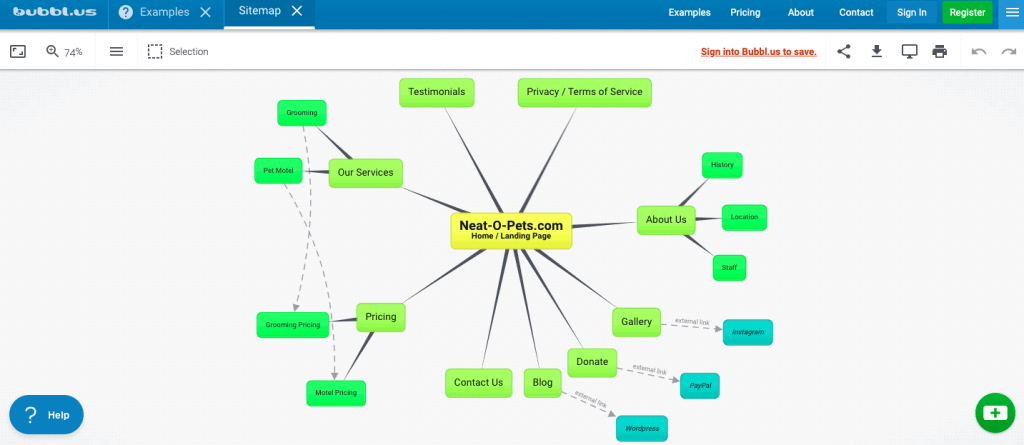
Best for: Quick, simple mind mapping without overwhelming features or complexity
Key functions: Browser-based mind mapping, colour customisation, collaboration, image export, mobile accessibility
Bubbl.us provides straightforward mind mapping without the feature complexity of more sophisticated tools. This makes it ideal for occasional users, small teams, or anyone who needs to create a quick thought map without investing time in learning advanced features.
Limitation: The free version restricts users to three mind maps, which may require moving to paid plans or considering alternatives for regular users.
Comparison Matrix
| AhaSlides | Meeting facilitation & training | Free ($7.95/mo paid) | PowerPoint, Zoom, Teams, LMS | Low |
| Miro | Enterprise visual collaboration | Free ($8/user/mo paid) | Slack, Jira, extensive ecosystem | Medium |
| Lucidspark | Structured workshops | Free ($7.95/mo paid) | Zoom, Teams, Lucidchart | Medium |
| Conceptboard | Visual presentation boards | Free ($4.95/user/mo paid) | Video chat, multimedia | Medium |
| MindMeister | Collaborative strategy mapping | $3.74/mo | MeisterTask, standard integrations | Medium |
| Coggle | Client-facing brainstorming | Free ($4/mo paid) | Google Drive | Low |
| MindMup | Budget-conscious teams | Free | Google Drive | Low |
| Mindly | Mobile individual brainstorming | Freemium | Mobile-focused | Low |
| IdeaBoardz | Agile retrospectives | Free | None required | Low |
| Evernote | Asynchronous idea capture | Free ($8.99/mo paid) | Cross-device sync | Low |
| LucidChart | Process brainstorming | Free ($7.95/mo paid) | Atlassian, G Suite, extensive | Medium-High |
| MindNode | Apple ecosystem users | $3.99/mo | Apple Reminders, iCloud | Low |
| WiseMapping | Open-source deployments | Free (open-source) | Customisable | Medium |
| Bubbl.us | Simple occasional use | Free ($4.99/mo paid) | Basic export | Low |
The Awards 🏆
Of all the brainstorming tools we've introduced, which ones will win the hearts of users and earn their prize at the best Brainstorming Tool Awards? Check out the O.G list we've chosen based on each specific category: Easiest to use, Most budget-friendly, Most suitable for schools, and
Most suitable for businesses.Drum roll, please... 🥁
🏆 Easiest to use
Mindly: You basically don't need to read any guide in advance to use Mindly. Its concept of making ideas float around the main idea, like the planet system, is easy to understand. The software focuses on making each feature as simple as possible, so it's very intuitive to use and explore.
🏆 Most budget-friendlyWiseMapping: Totally free and open-source, WiseMapping allows you to integrate the tool into your sites or deploy it in enterprises and schools. For a complimentary tool, this satisfies all your basic needs to craft a comprehensible mind map.
🏆 Most suitable for schoolsAhaSlides: AhaSlides' brainstorming tool allows students to alleviate that social pressure by letting them submit their ideas anonymously. Its voting and reaction features make it perfect for school, as does everything AhaSlides offers, like interactive games, quizzes, polls, word clouds and more.
🏆 Most suitable for businessesLucidspark: This tool has what every team needs: the ability to collaborate, share, timebox, and sort out ideas with others. However, what wins us over is Lucidspark's design interface, which is very stylish and helps teams spark creativity.
Frequently Asked Questions
How can I conduct a brainstorming meeting?
To conduct an effective brainstorming meeting, start by clearly defining your objective and inviting 5-8 diverse participants. Begin with a brief warm-up, then establish ground rules: no criticism during idea generation, build on others' ideas, and prioritise quantity over quality initially. Use structured techniques like silent brainstorming followed by round-robin sharing to ensure everyone contributes. Keep the session energetic and visual, capturing all ideas on whiteboards or sticky notes. After generating ideas, cluster similar concepts, evaluate them systematically using criteria like feasibility and impact, then define clear next steps with ownership and timelines.
How effective is brainstorming?
Brainstorming's effectiveness is actually quite mixed, according to research. Traditional group brainstorming often underperforms compared to individuals working alone, then combining their ideas, but some research suggests brainstorming works best for generating creative solutions to well-defined problems, building team alignment around challenges, and getting diverse perspectives quickly.
What is a brainstorming tool used to plan projects?
The most common brainstorming tool used for project planning is mind mapping.
A mind map starts with your main project or goal at the centre, then branches out into major categories like deliverables, resources, timeline, risks, and stakeholders. From each of these branches, you continue adding sub-branches with more specific details - tasks, subtasks, team members, deadlines, potential obstacles, and dependencies.





